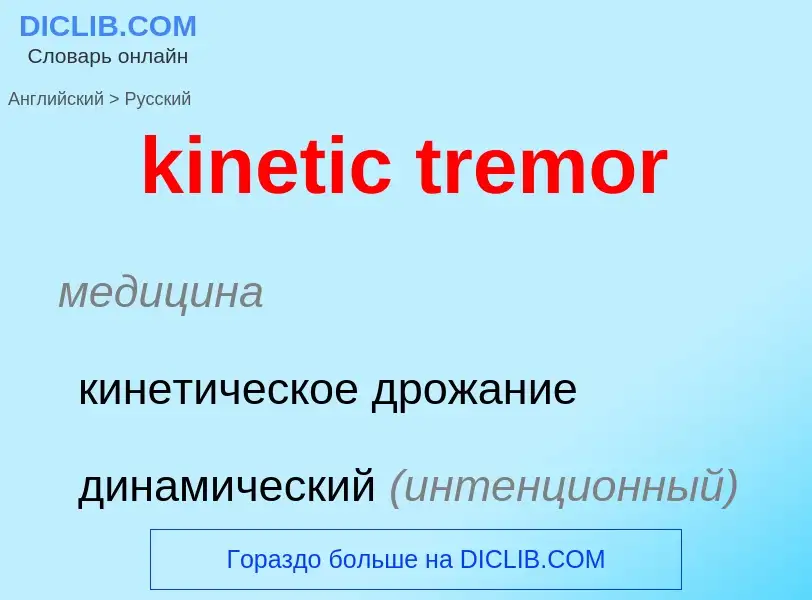Перевод и анализ слов искусственным интеллектом ChatGPT
На этой странице Вы можете получить подробный анализ слова или словосочетания, произведенный с помощью лучшей на сегодняшний день технологии искусственного интеллекта:
- как употребляется слово
- частота употребления
- используется оно чаще в устной или письменной речи
- варианты перевода слова
- примеры употребления (несколько фраз с переводом)
- этимология
kinetic tremor - перевод на русский
медицина
кинетическое дрожание
динамический (интенционный) тремор
медицина
постуральный тремор
медицина
идиопатическое дрожание
Определение
Википедия
Essential tremor (ET), also called benign tremor, familial tremor, and idiopathic tremor, is a medical condition characterized by involuntary rhythmic contractions and relaxations (oscillations or twitching movements) of certain muscle groups in one or more body parts of unknown cause. It is typically symmetrical, and affects the arms, hands, or fingers; but sometimes involves the head, vocal cords, or other body parts. Essential tremor is either an action (intention) tremor—it intensifies when one tries to use the affected muscles during voluntary movements such as eating and writing—or it is a postural tremor, present with sustained muscle tone. This means that it is distinct from a resting tremor, such as that caused by Parkinson's disease, which is not correlated with movement.
Essential tremor is a progressive neurological disorder, and the most common movement disorder. Its onset is usually after age 40, but it can occur at any age. The cause is unknown. Diagnosis is by observing the typical pattern of the tremor coupled with the exclusion of known causes of such a tremor.
While essential tremor is distinct from Parkinson's disease, which causes a resting tremor, essential tremor is nevertheless sometimes misdiagnosed as Parkinson's disease. Some patients have been found to have both essential tremors and resting tremors.
Treatments for essential tremor include medications, typically given sequentially to determine which provides the best compromise between effectiveness and troublesome side effects. Clostridium botulinum toxin (Botox) injections and ultrasound are also sometimes used for cases refractory to medications.

